Staying Fit

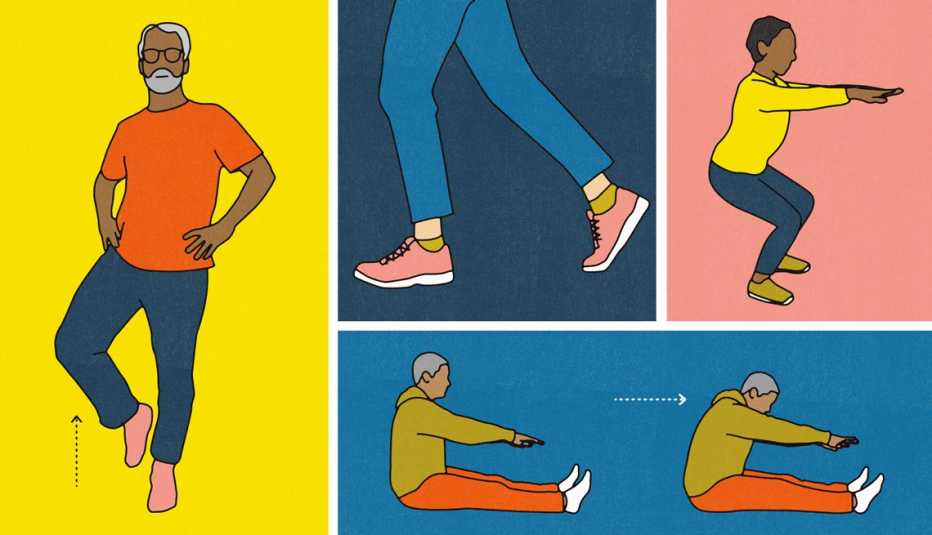
If we had a pill that accomplished everything that physical activity does for overall health, we would prescribe it for everyone,” says Donald Hensrud, M.D., former medical director of the Mayo Clinic Healthy Living Program.
Overall fitness isn’t just about breaking a sweat; it’s about four specific areas — aerobic endurance, muscular strength, flexibility and balance, he says. “Where you currently stand with each can help you plan the smartest approach when it comes to creating your own personal fitness regimen.”


AARP Membership— $12 for your first year when you sign up for Automatic Renewal
Get instant access to members-only products and hundreds of discounts, a free second membership, and a subscription to AARP the Magazine.
These tests, and the scoring charts, are based on a series of assessments used by the Mayo Clinic to test the health and fitness of its clients.
To get the most accurate assessment:
- Take each test before you exercise (if you already have a routine).
- Don’t try them if your muscles are sore, stiff or tired.
- Warm up first by walking in place for 3 to 5 minutes.
- Wear loose clothing that doesn’t restrict movement, as well as comfortable, supportive sneakers.
NOTE: If you’re new to exercise, always check with a physician before starting a fitness program for the first time.
Aerobic fitness
Why it matters: “Aerobic [or cardiovascular] fitness is one of the best indicators of long-term health and overall mortality,” says Hensrud. “The higher your aerobic level, the more oxygen your heart and muscles are able to utilize to produce energy.” Walking pace is a great measure of fitness. A 2019 study of nearly 475,000 people in Mayo Clinic Proceedings found that those who walk more briskly have longer life expectancies.
Test yourself

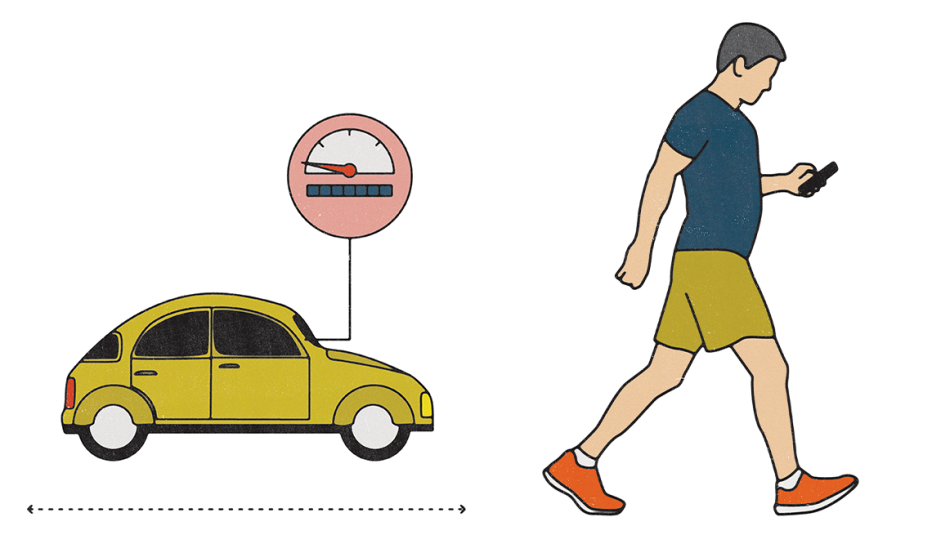
1. The 1-mile walk
- Measure out 1 mile on a flat road using your car’s odometer, or find a standard quarter-mile track — four laps around the track equals 1 mile.
- Using the stopwatch function on your smartphone, start the clock and walk as quickly as you can. Don’t run or jog. Just keep up a steady pace, slowing down or speeding up as you like, but try to finish as rapidly as possible. Then stop the clock.

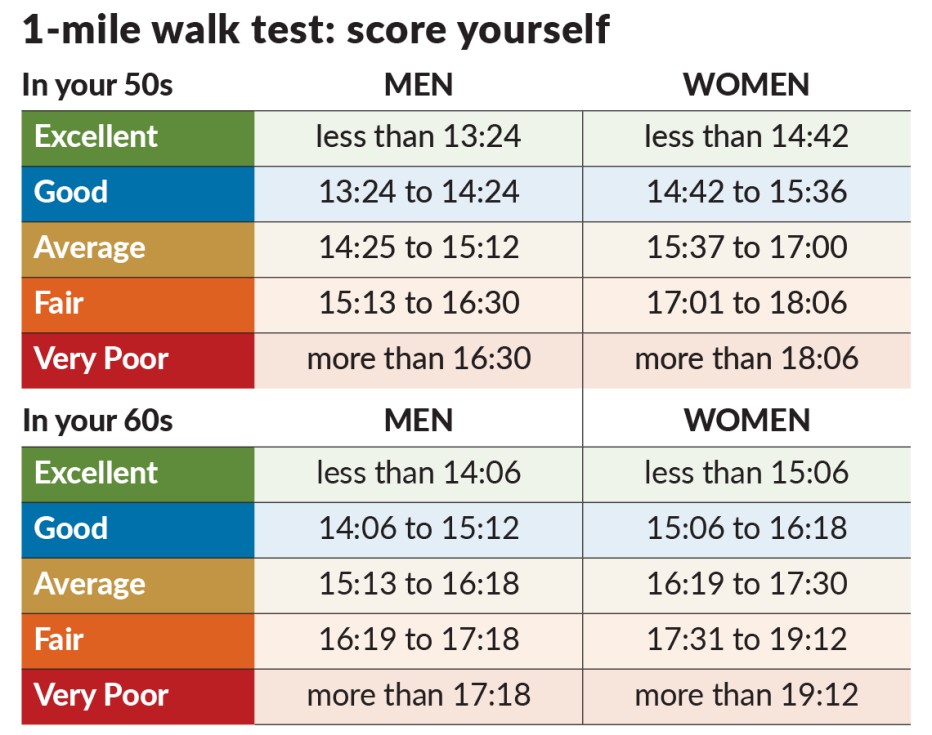
Improve your score
“Incorporate at least 150 minutes of moderate-intensity cardio exercise or 75 minutes of high-intensity exercise into your week,” advises Hensrud.
Walking, running, cycling, stair-climbing, swimming, dancing and aerobics classes are just a few of the options that work. What counts is elevating your pulse to between 60 and 70 percent of your maximum heart rate (MHR) and keeping it there for the entire session.
Roughly, that means exercising hard enough that you can carry on a conversation, but with a little bit of difficulty. Alternatively, get yourself a heart-rate monitor. To find your MHR, just subtract your age from 220. For example, if you’re 60, your MHR would be 160 (220 minus 60). That means you would need to keep your pulse at between 96 and 112 beats per minute.





























































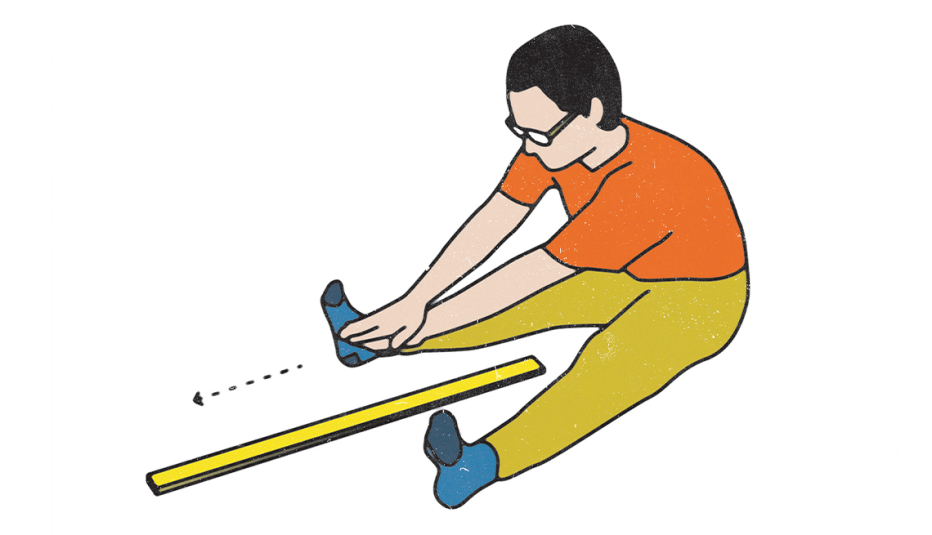
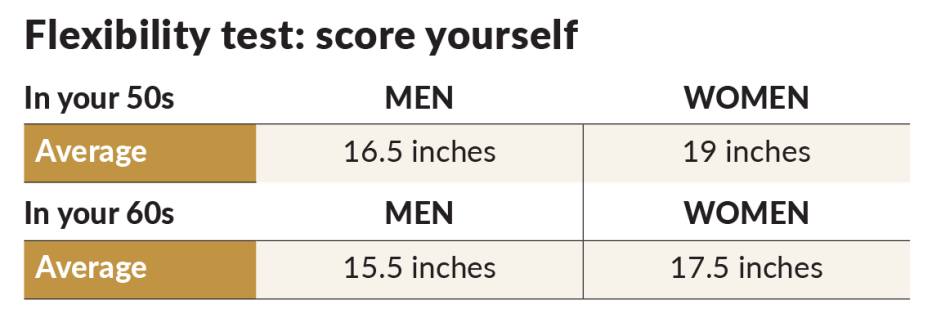


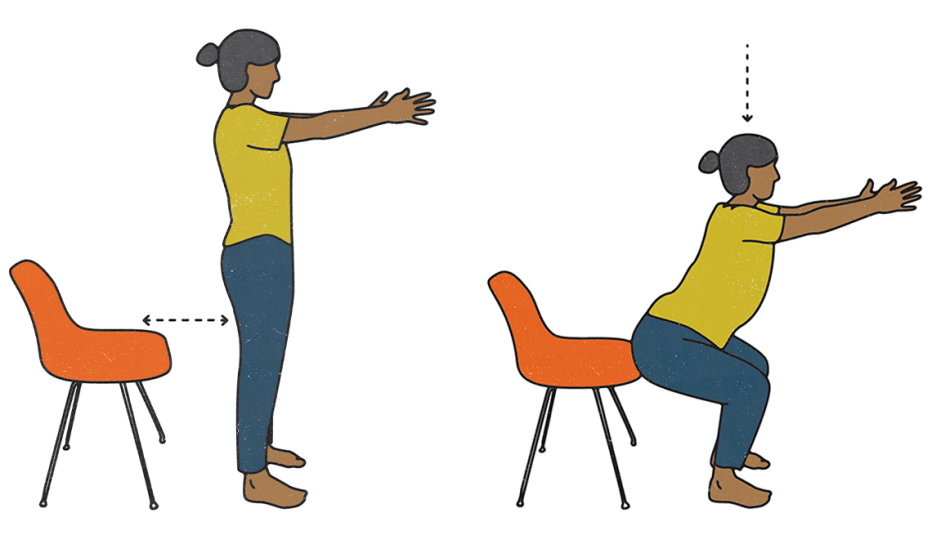

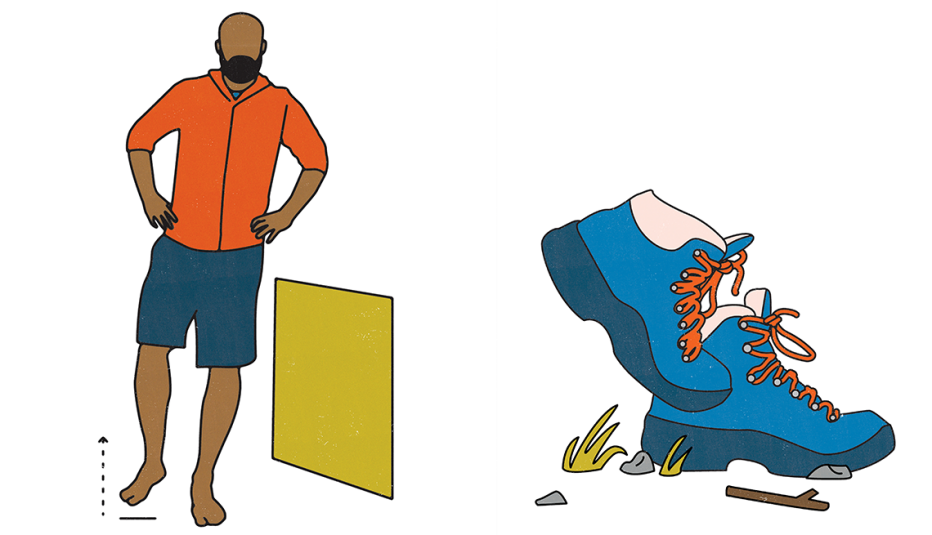
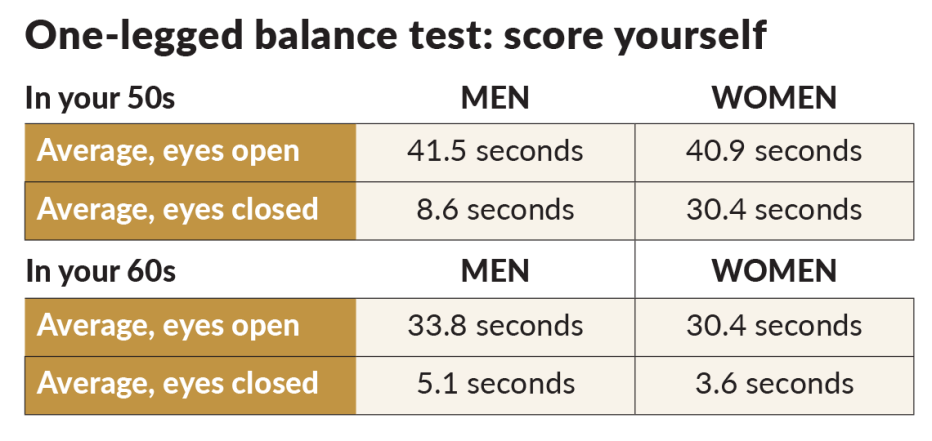






More on Health
5 Exercises for Your Bones
Try these easy moves at home
8 Training Tips for Older Runners
Expert advice for keeping on track
The 7 Best Arm Workouts for a Stronger Upper Body
This easy upper-body workout may help you feel (and look) stronger
Recommended for You